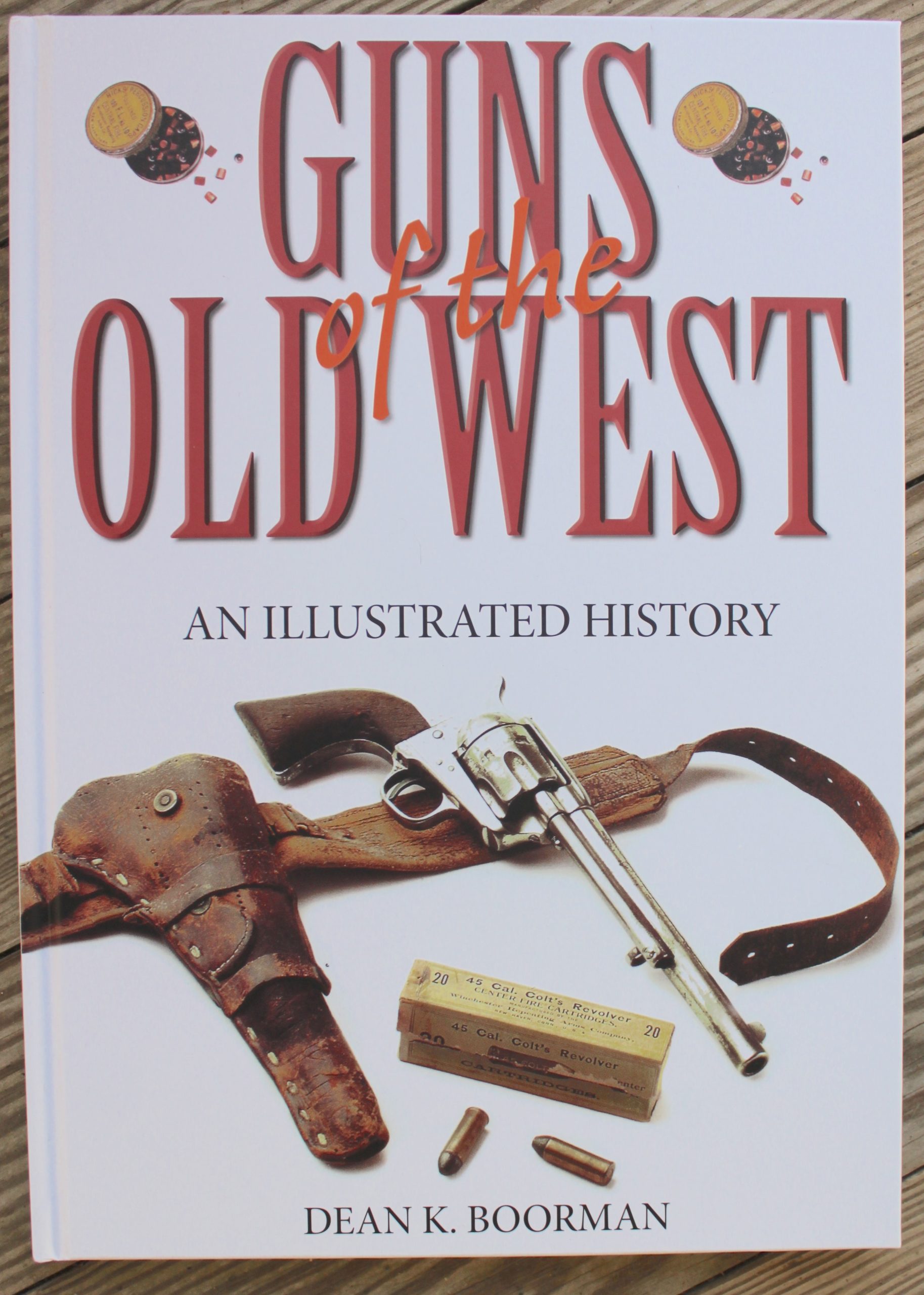
By Dean K. Boorman
Hardcover, 128 photographic quality pages
$29.95 plus $5 shipping
Rowman and Littlefield 1-800-462-6420
Email: customercare@nbnbooks.com
This is like a book version of a tour of a great firearms museum except there is a lot more information given about the guns.
All the guns of the Old West are depicted in beautiful color photos and not just the famous ones. Obscure firearms like the Colt cloverleaf revolver and the spur trigger Colt Saturday Night Specials are shown here and they are rarely seen anywhere else even though they played their part in the settling of the West.
Not everyone had $17 for a new Colt Single Action Army revolver back then. That was a month’s wages for a lot of folks.
The accompanying text is very concise and informative delivered in a readable manner.
The story begins with the first muzzleloaders taken West and continues up through the 1890’s. There is a large section on handguns including their holsters. This is followed by the long arms that were used and again, all the famous and all the obscure and almost forgotten guns are included. It concludes with a chapter on carrying them on the frontier.
Famous figures of the Old West such as gunfighter John Wesley Hardin and lawman/outlaw Wyatt Earp add their colorful stories to this work. There is a blow-by-blow account of the famous gunfight at the OK Corral, which actually happened in an empty lot next to Fly’s Photographic Studio. Often the only difference between an outlaw and the law was the badge one wore.
The chapter on riding shotgun tells the story of the guns used to protect the stagecoaches and, as usual, includes excellent photos of the guns.
The military weapons used on the frontier and the guns of the Indians are covered in detail. After all, their conflict was the real winning of the West that opened it up for the settlers. Fittingly the last chapter is about Buffalo Bill and his Wild West show, which marked the end of the Old West and the beginning of its modern legendary status.
The guns are shown with other pertinent artifacts used alongside them such as knives, tools, saddles, and clothing. There is a chapter on gun making during the period showing the movement from entirely hand made to modern mass production as it took place in the 19th Century.
In addition to the high quality color photos there are plenty of historic period photos to help take the reader back to those days. There are also schematic drawings showing how the mechanisms of some of the guns work. The necessity of these for understanding a design cannot be overstated.
For someone who wants a good look at all the firearms used on the Western Frontier this book can’t be beat.—Jim Dickson



